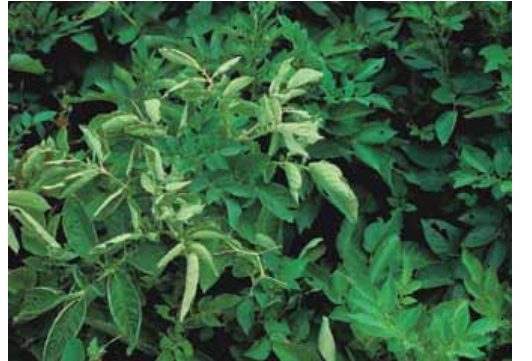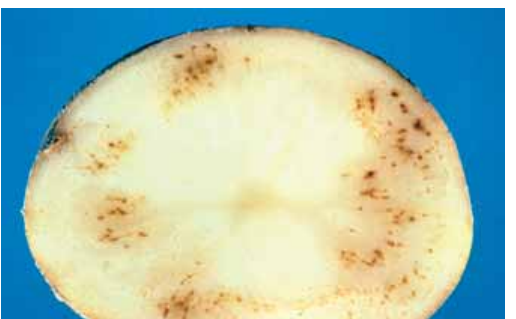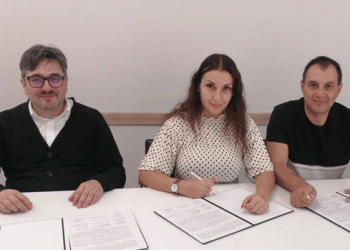The potato leafroll virus (PLRV) is introduced into a potato field either by planting infected seed tubers or by aphid transmission. Several species of aphids can
transmit PLRV, but the green peach aphid seems to be the most efficient vector of this virus. Winged aphids spread the virus over long distances.
Infected seed, sprouted cull potatoes and volunteers are the main sources of PLRV. Aphids acquire the virus while feeding on infected plants and transmit the virus
to potato plants in a persistent manner.
PLRV is restricted to the phloem vascular tissue. In some varieties, notably Russet Burbank, the virus causes discolouration of the phloem in the tubers, or net necrosis.
| SEED INFECTION Infected seed is the source of infection | FIELD INFECTION The virus is transmitted by aphids during the current season |
| Symptoms are more severe • Plants are stunted, with an upright growth habit. • Lower leaves are rolled up, pale green and leathery. • Eventually lower leaves die and upper leaves turn yellowish. | Symptoms are milder EARLY SEASON INFECTION • Plants are stunted. • Upper leaves are rolled up. • Rolled-up leaves may be yellowed or pinkish. LATE SEASON INFECTION • Plants may show little or no foliar symptoms. • The virus can still move down into the tubers. |
| • Often daughter tubers do not develop net necrosis symptoms. | • Usually, daughter tubers develop net necrosis that renders tubers unmarketable. Net necrosis may not be apparent at harvest, but develops in storage. |
| • Yield is reduced both in tuber numbers and in tuber size. | • Yield reduction is not significant unless infection occurs very early in the season. |












